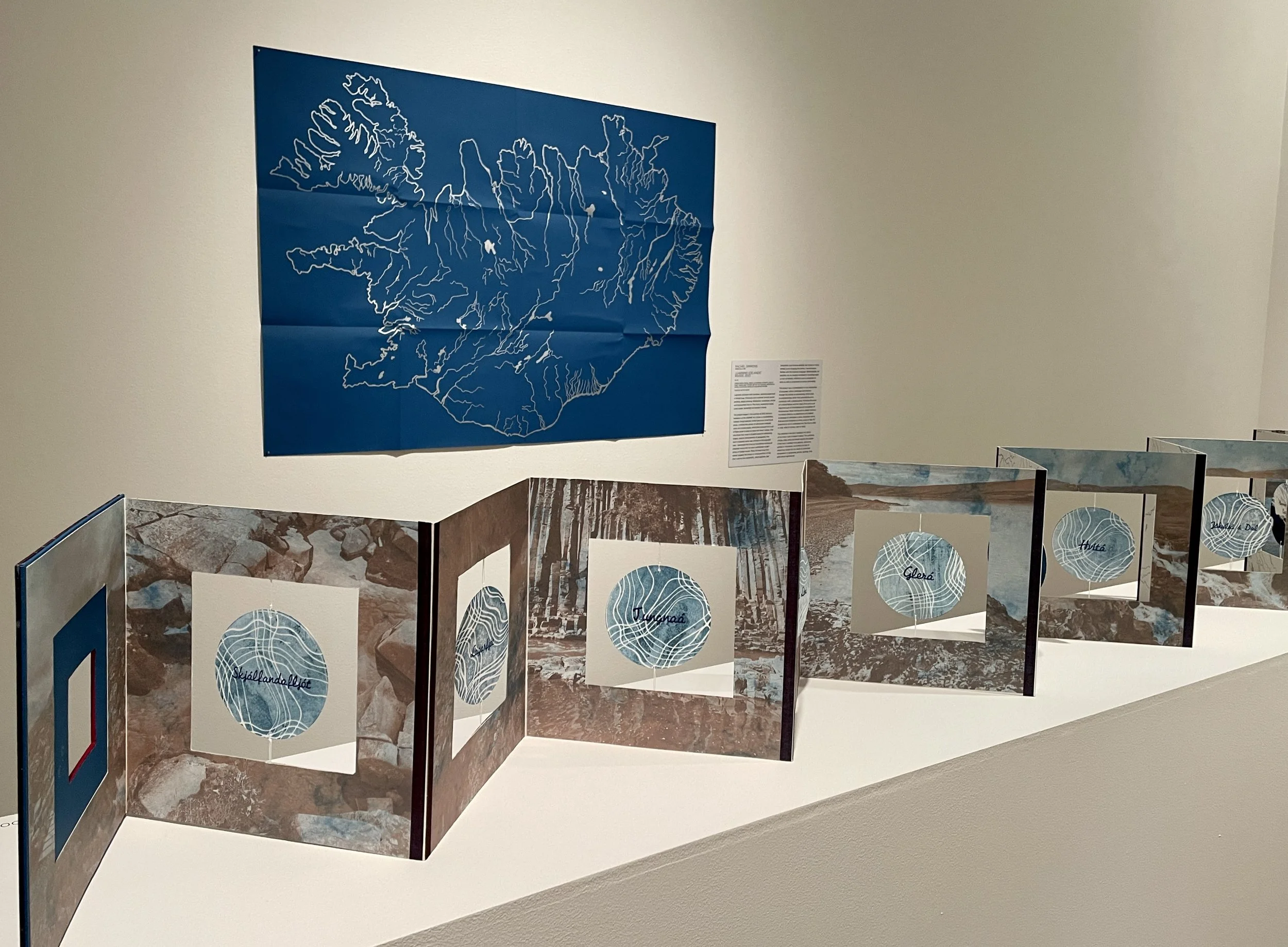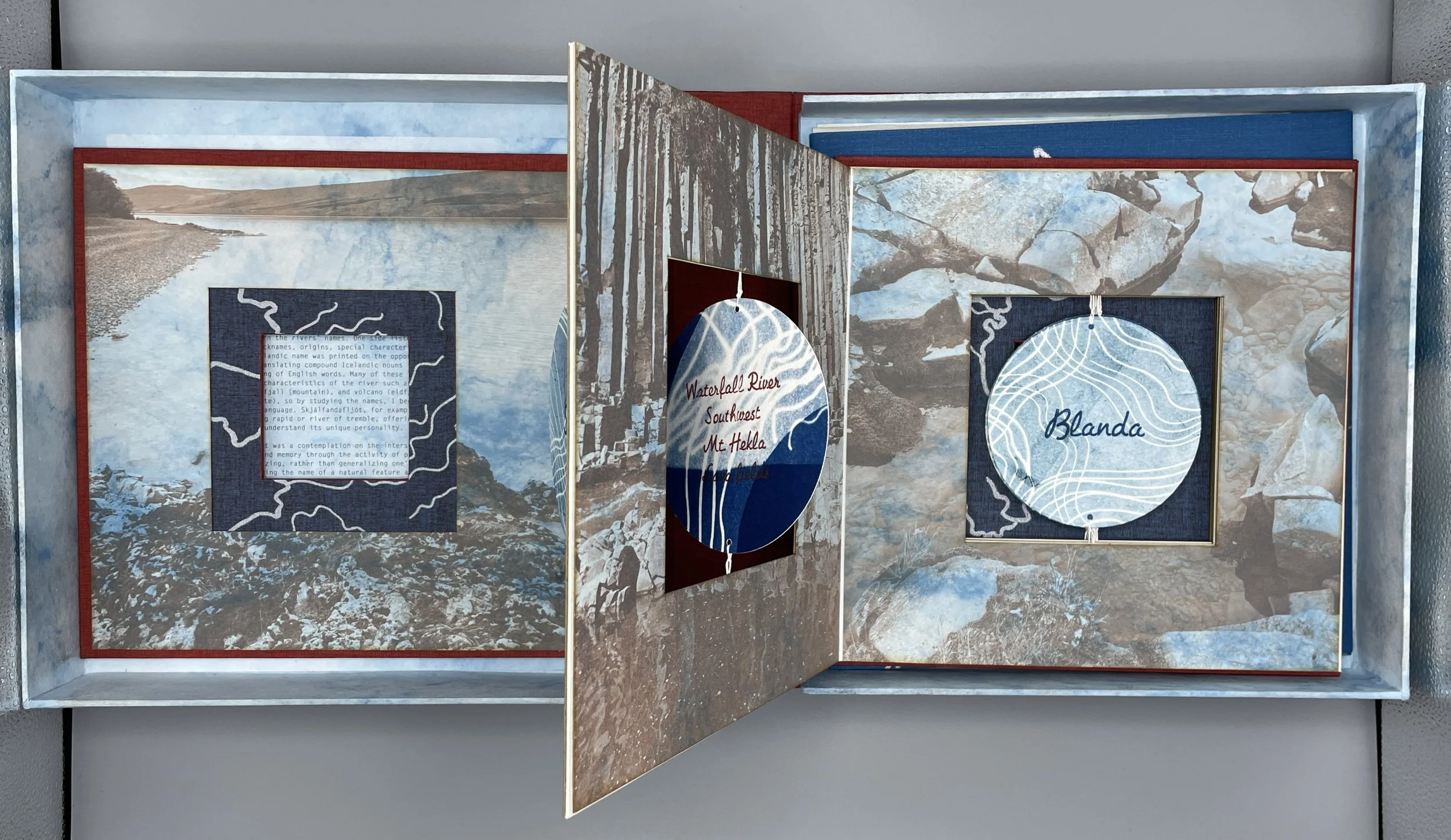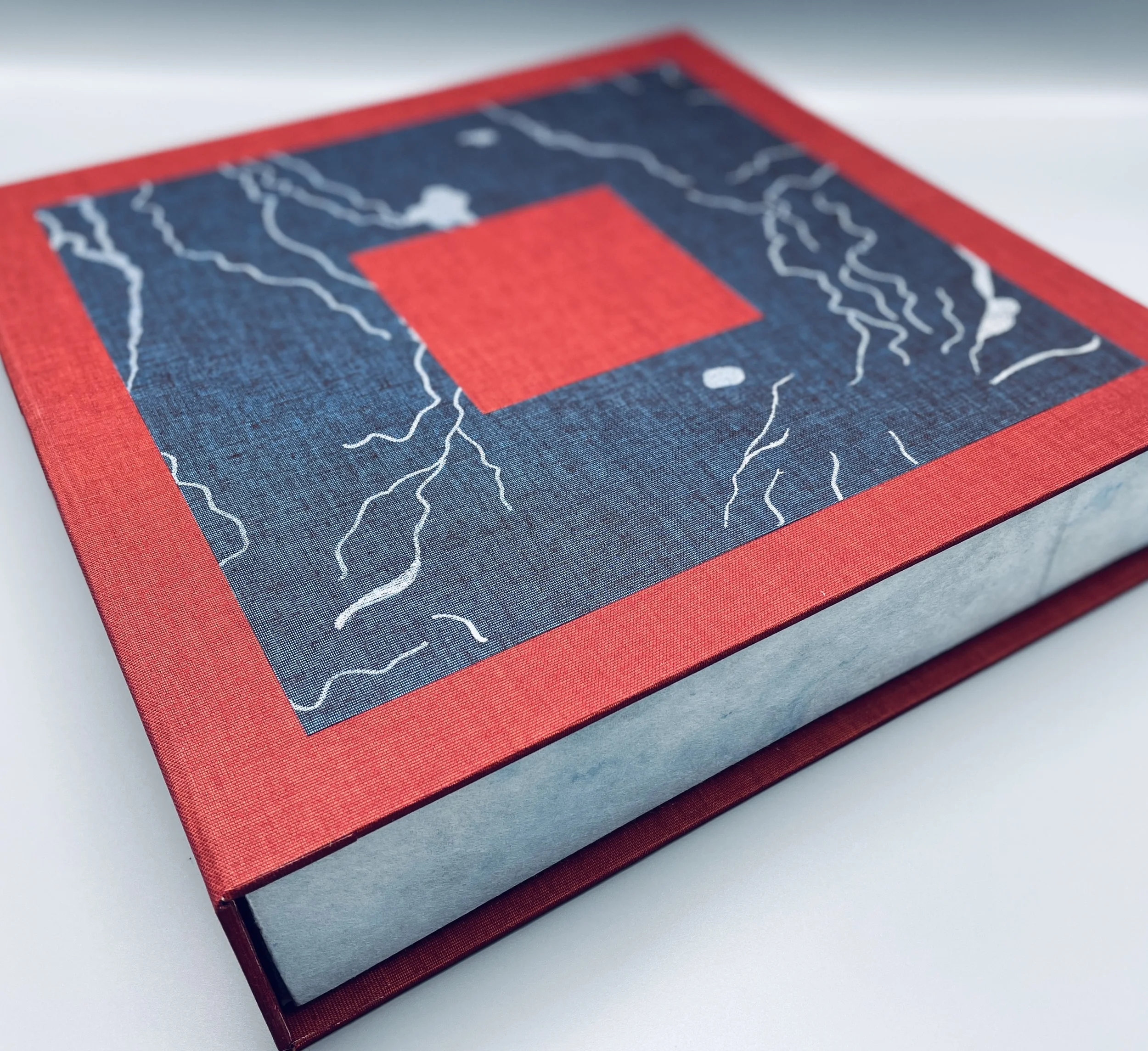Learning Icelandic rivers
Installation view at the Rollins Museum of Art, April 2023
Learning Icelandic Rivers, 2023, Variable limited edition artist’s book. Four copies in the edition. Leporello structure with windows, spinning pages and a folded map. Screen printing, digital printing, letterpress, cyanotype, acrylic paint, thread and typewritten text on Thai Kozo, watercolor paper, cover paper, bookcloth and binder’s board. For the book, closed dimensions are 11” tall x 11” wide” x 1.75” deep and open dimensions are 11” tall x 100” wide x 8” deep. For the map, closed dimensions are 10.5” tall x 11.5” wide x .5” deep and open dimensions are 31” tall x 44” wide.
Collected by Tufts University, Tisch Library, Special Collections
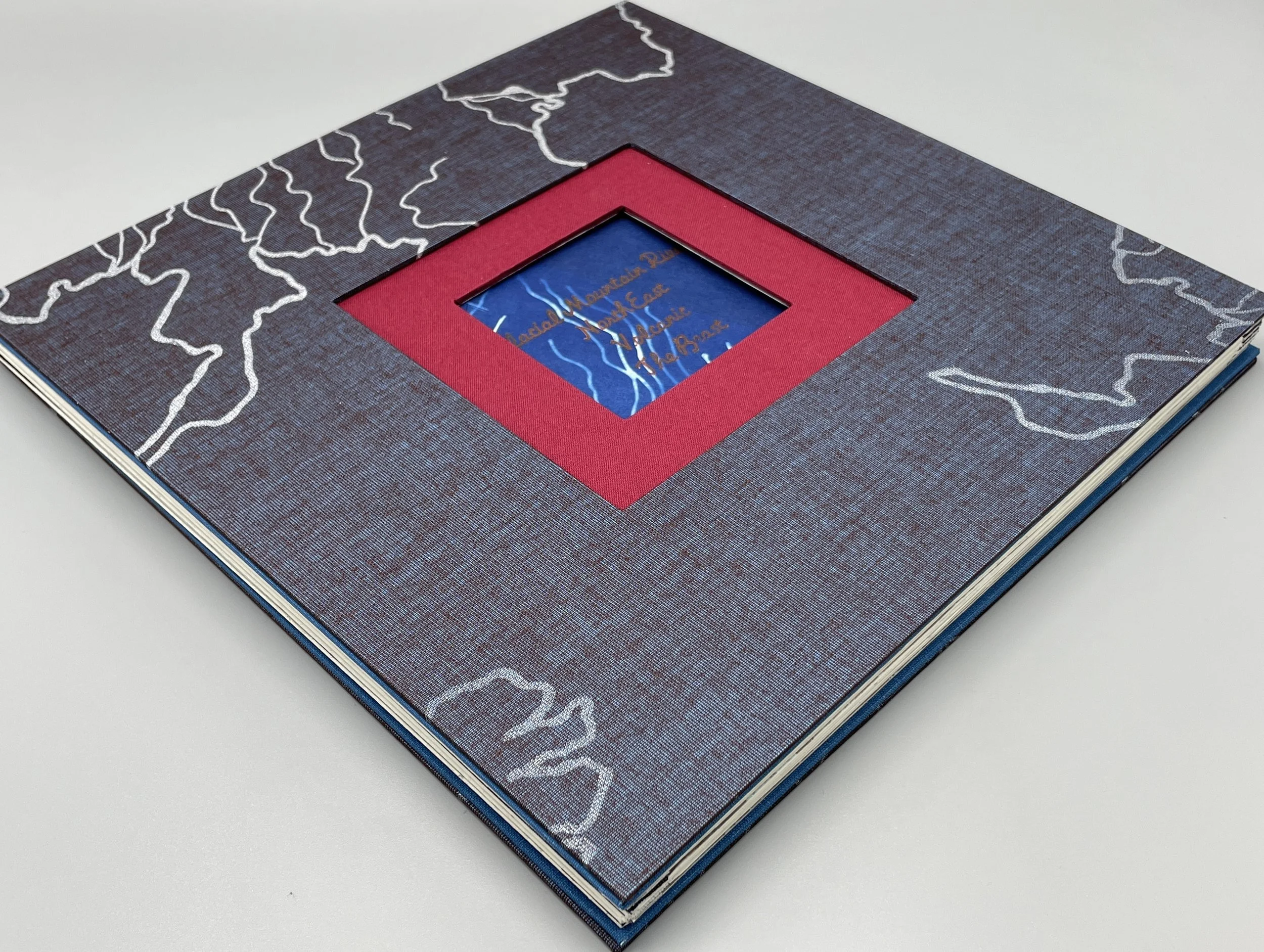
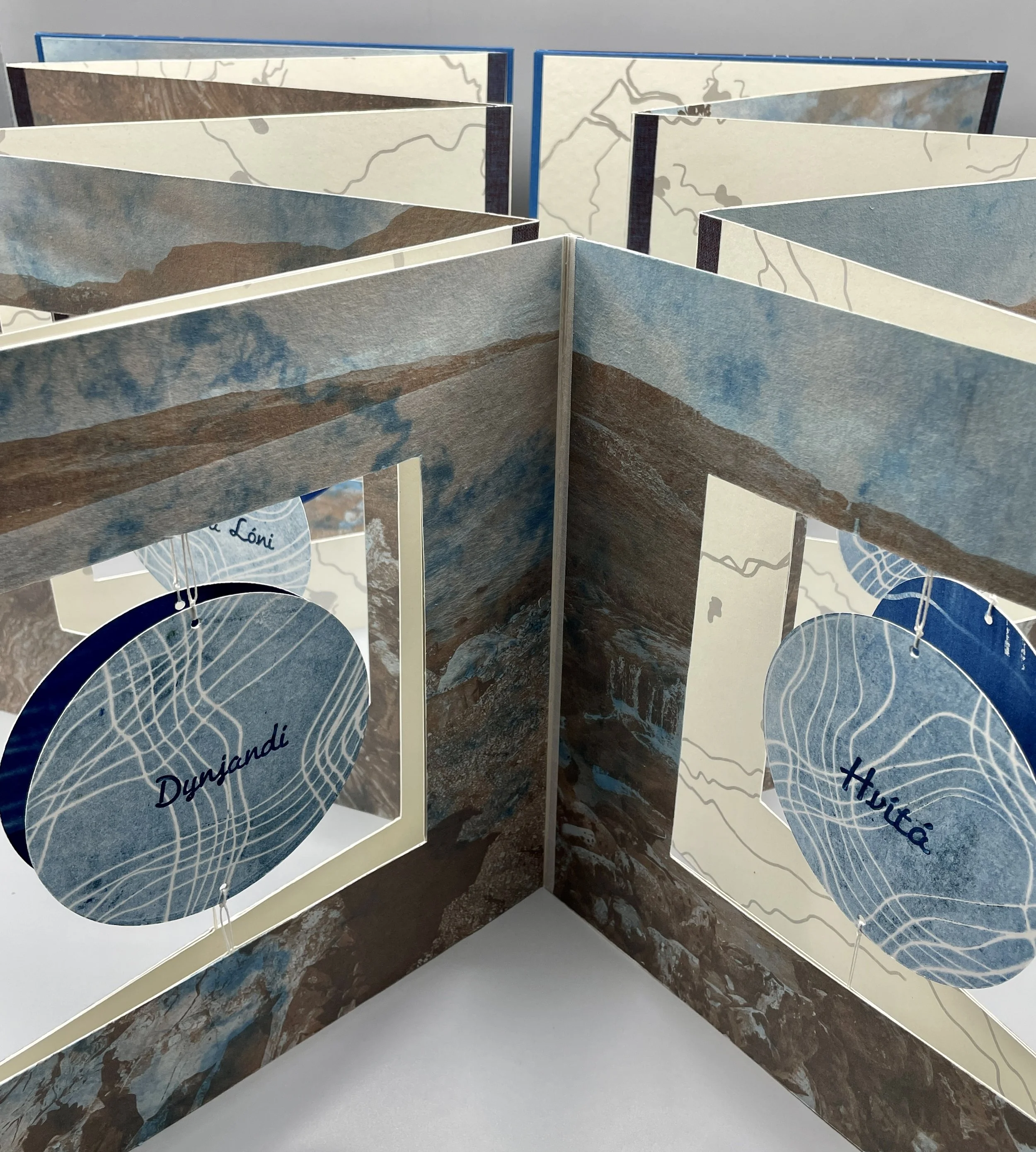
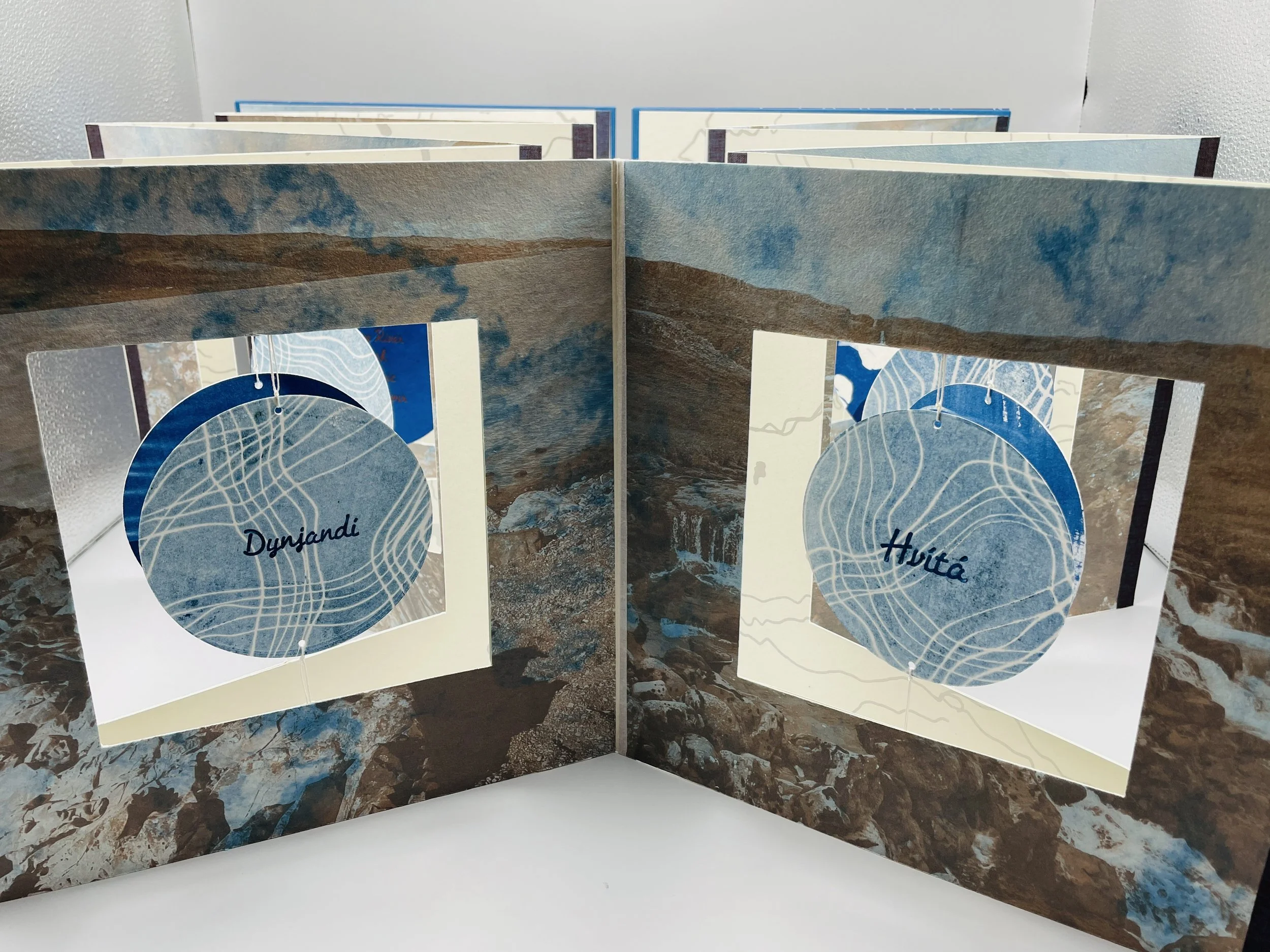
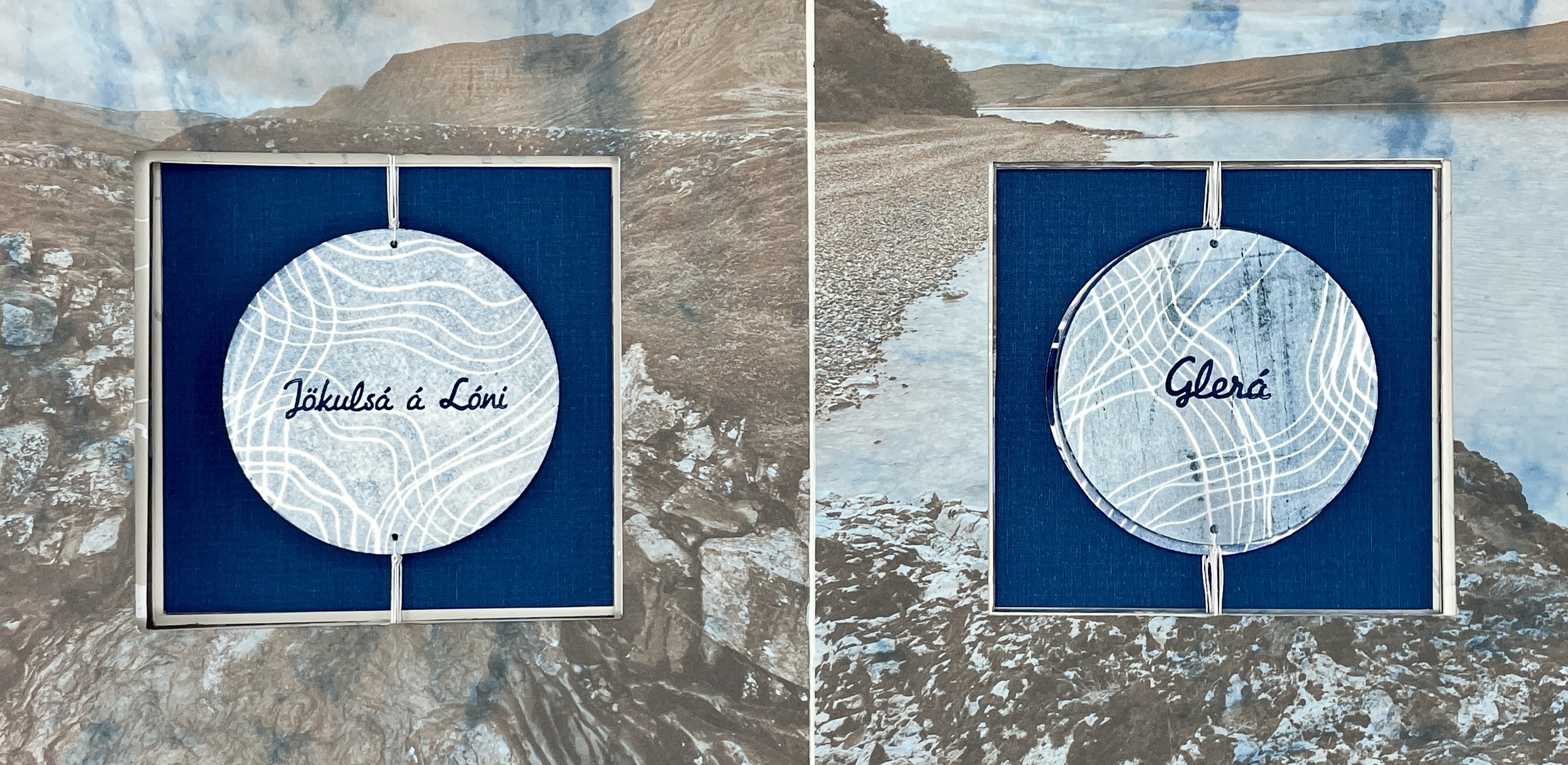
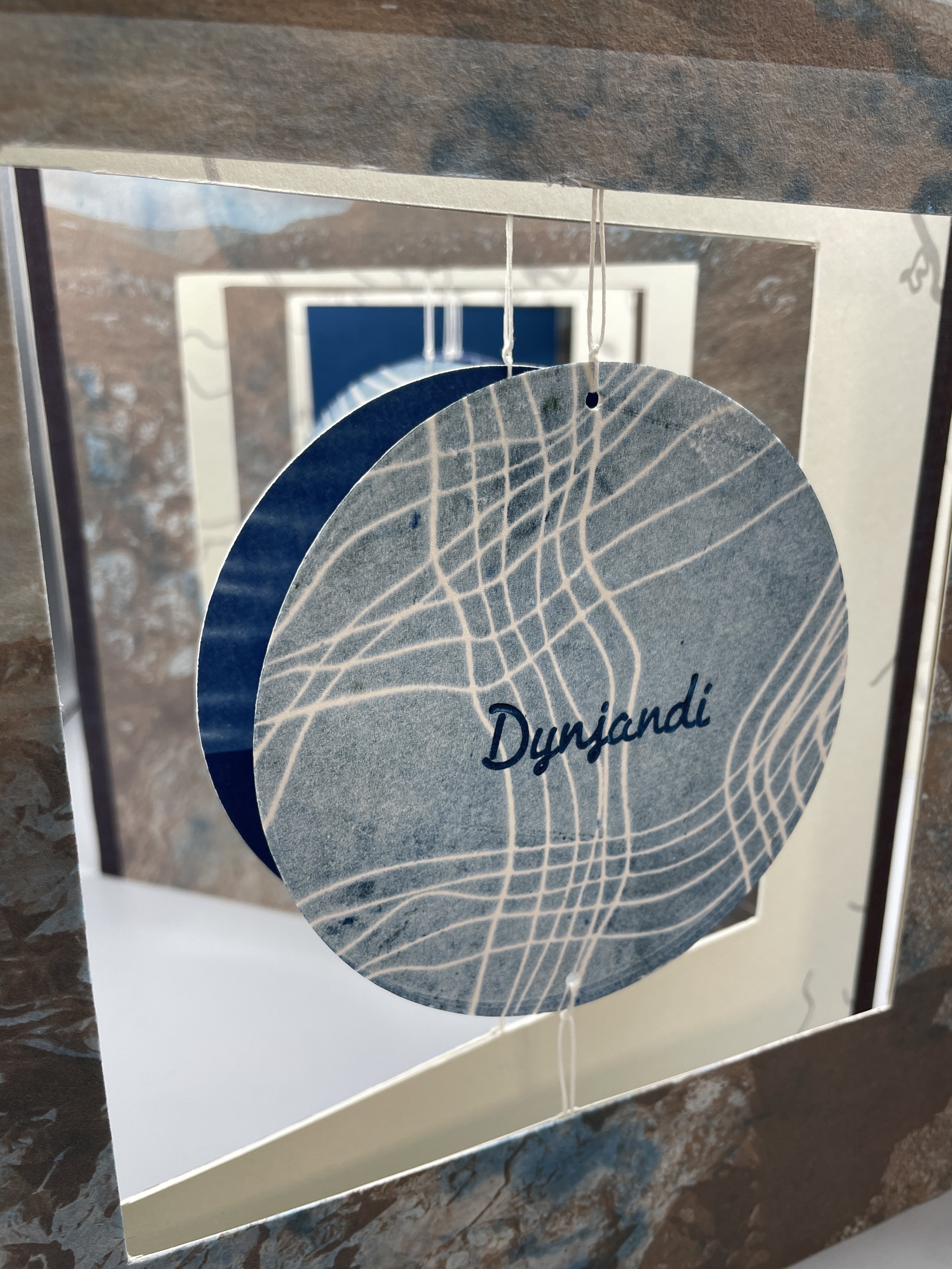
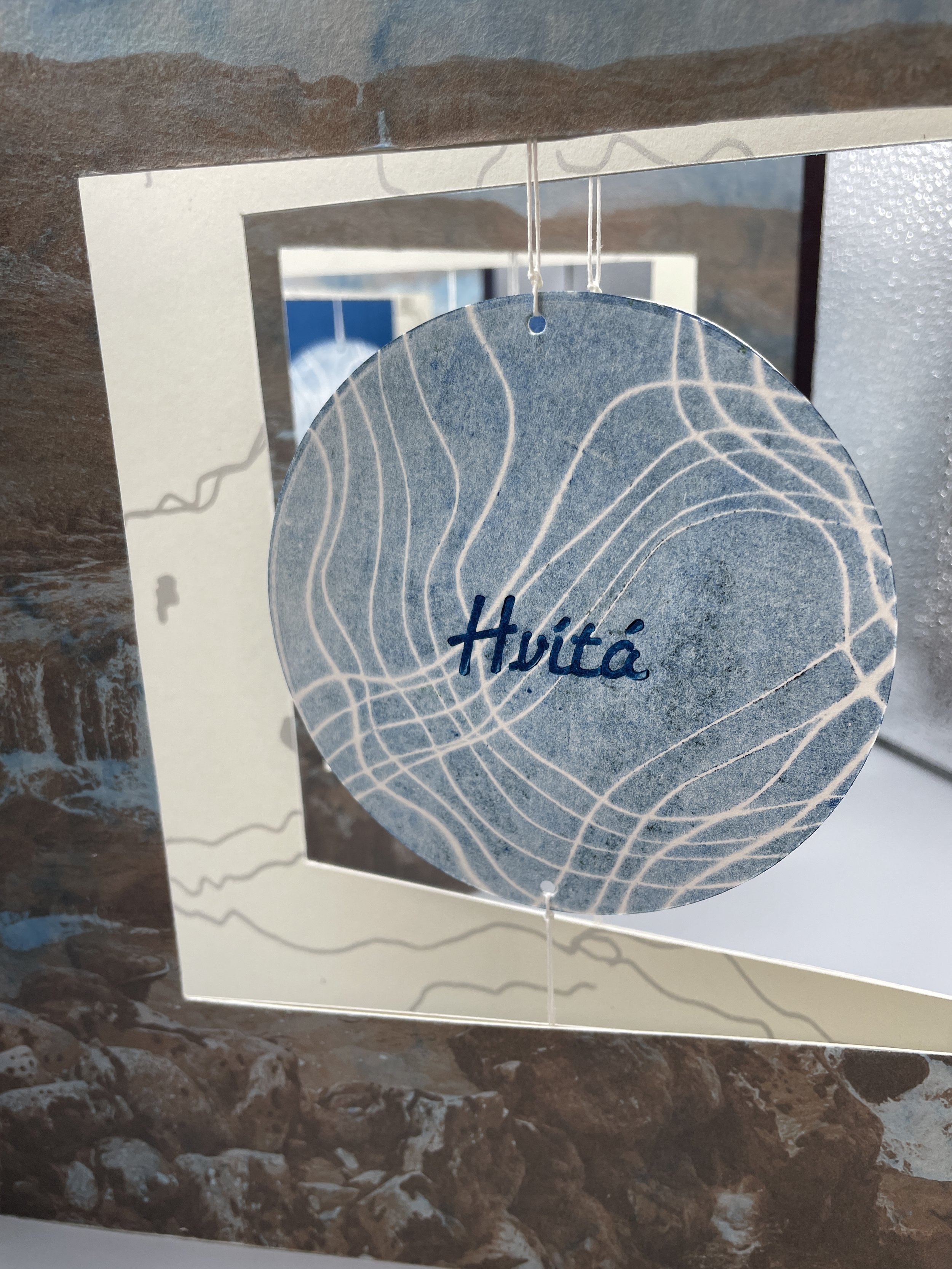

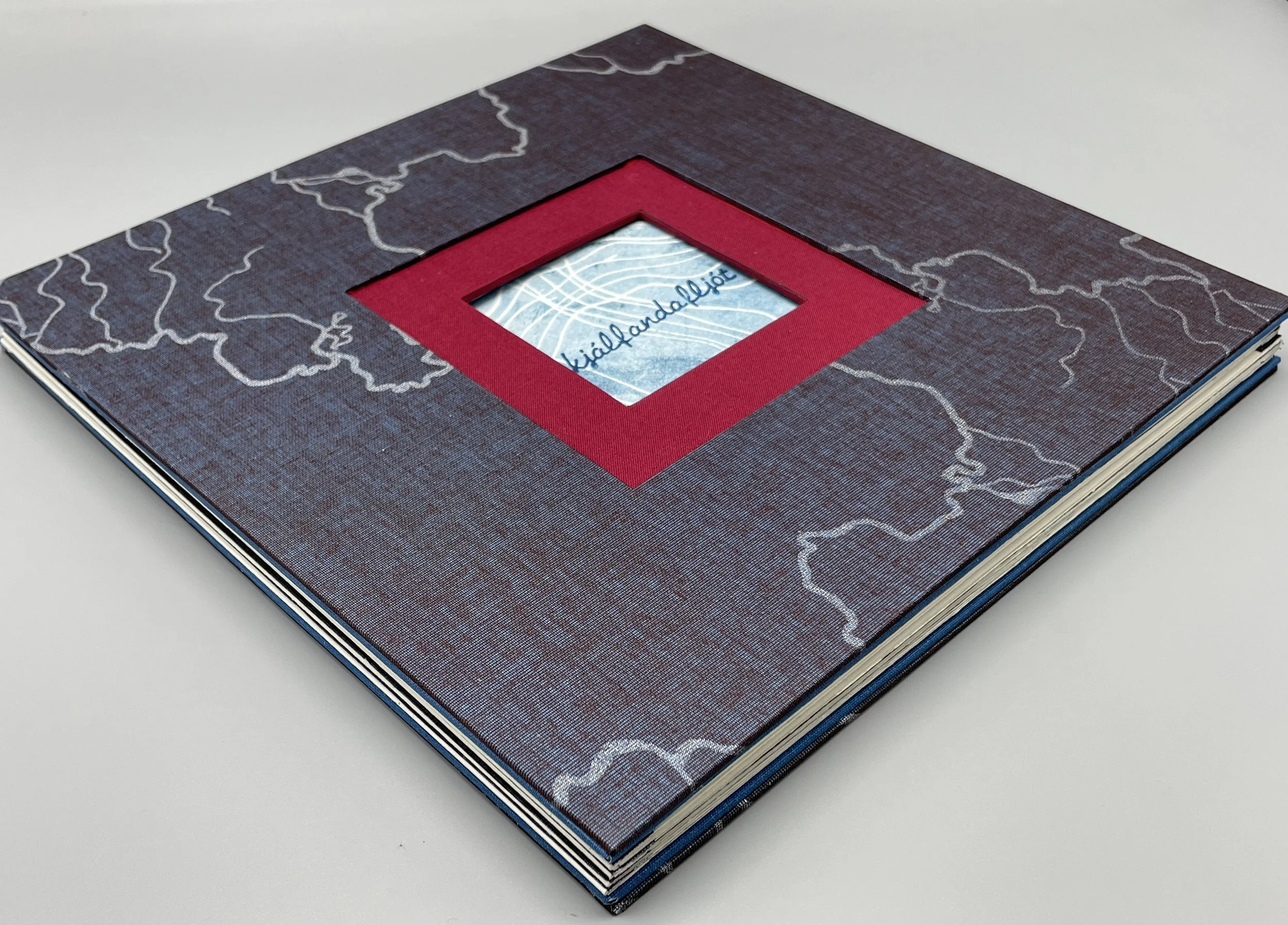

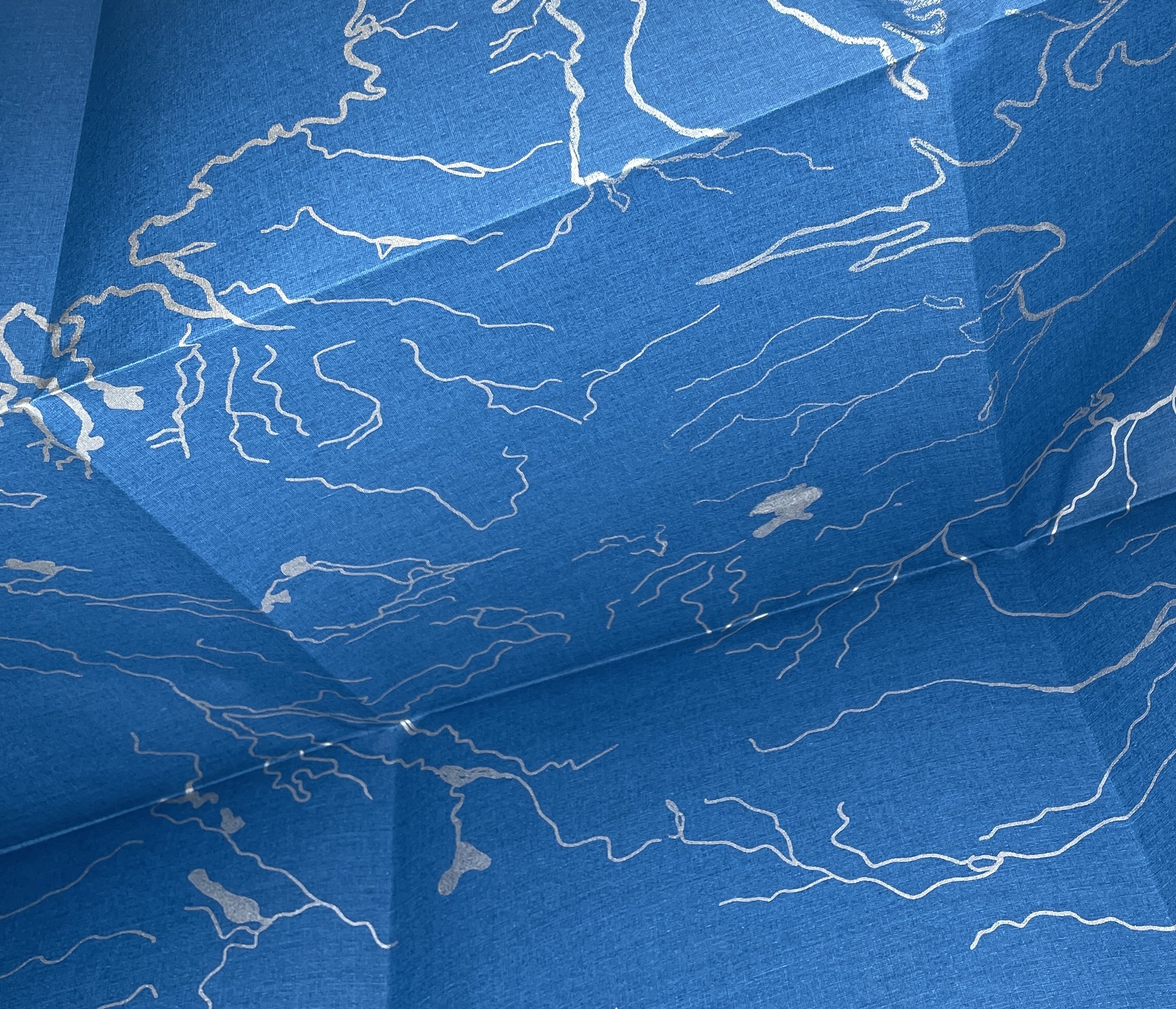
This project began in the summer of 2022 during a residency at the Skaftfell Art Center in Seyðisfjörður, Iceland. Using Icelandic metal type and a small book press, I printed the names of well-known Icelandic rivers on circular pages, which then evolved into a set of flash cards to help me learn the rivers’ names. One side listed four clues in English based on nicknames, origins, special characteristics & geography; the river’s Icelandic name was printed on the opposite side. I developed the clues by translating compound Icelandic nouns into my own—admittedly rough— string of English words. Many of these long river names suggest the origins or characteristics of the river such as foss (waterfall), Jökull (glacier), fjall (mountain), and volcano (eldfjall), dal (valley) or hvítur (white), so by studying the names, I became more familiar with the Icelandic language. Skjálfandafljót, for example, can be roughly translated to trembling rapid or river of tremble, offering a way to remember its name as well as understand its unique personality.
This project was a contemplation on the intersection of language, culture, landscape and memory through the activity of placemaking, which relies on individualizing, rather than generalizing one’s connection with a physical place. Knowing the name of a natural feature and the origin of its name is an important part of internalizing one’s recognition of the landscape. Never having had an eidetic memory, I've always relied on my experiences and interest in language to remember a place, especially one as fluid and ever-changing as a river, ocean or lake. It’s important to me to understand why the river is milky or clear, wide or narrow, calm or rapid.
The materials in the book represent the colors of the rivers I saw in Eastern Iceland. The variations of blue, milky white and brown identify the origins of the rivers—whether from glaciers, volcanoes, springs or mountains—and reflect the way in which river names are the result of a particular combination of geography, gravity, geology, time and cultural significance.
Installation view at Rollins Museum of Art, April 2023

